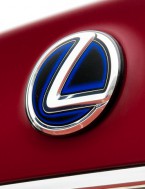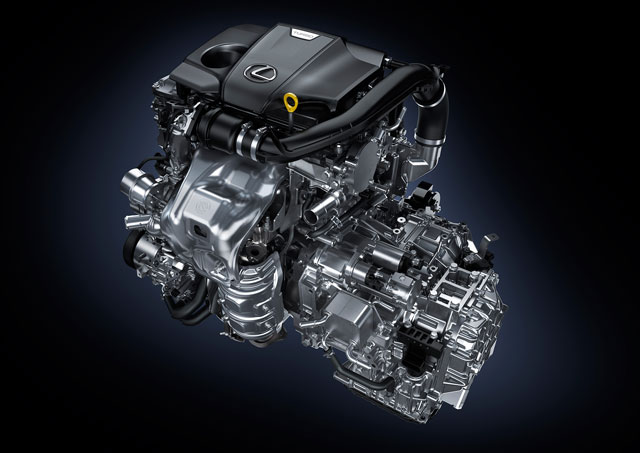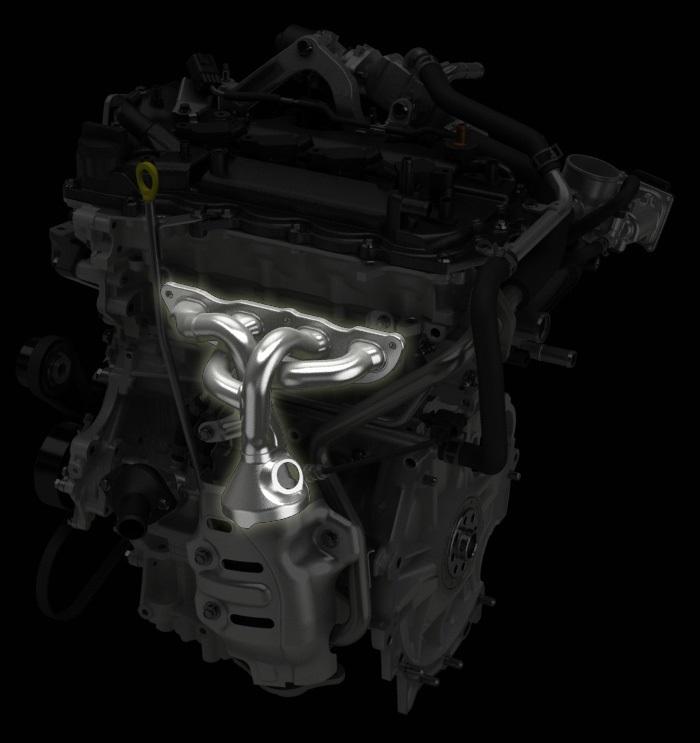
The upcoming 2015 Lexus NX200t is equipped with the first turbocharged engine within the whole Lexus history. This engine has the Toyota internal code name “8AR-FTS”.
The 8AR-FTS has an 2.0L displacement with an open-deck, midi-skirt type aluminum cylinder block. It also has a fully balanced forged steel crankshaft, cast-in iron cylinder liners.
On the Lexus NX200t, the turbocharged 8AR-FTS makes 235 hp at 5,600 rpm with 258 lb-ft of torque available from 1,650-4,000 rpm. On the paper this engine sounds just like a normal modern 4-cylinder turbo engine, which has similar performance (2.0L, around 250hp, peak torque available well before 2,000 rpm) such as the BMW N20 engine (used on 228i, 328i, 428i, 528i etc), the Audi EA113 (used on 4-cylinder version of A4, A5, A6 etc), the GM LTG Ecotec (used on the Cadillac ATS, CTS).
However, some design details of the 8AR-FTS indicates Toyota has bigger plans for this engine, and its usage on the Lexus NX200t is just the tip of the iceberg.
One distinct feature of the 8AR-FTS is: despite using an air-to-air intercooler, it is using an air-to-liquid intercooler. Please note that here the “intercooler” means the mechanical part used to cool the intake air, which is heated up by the red-hot turbocharger.
Although there are already many turbo engines using air-to-liquid intercooler design (such as the BMW N63/N74 – used on BMW 550i/750i etc, and the GM LF3 – used on Cadillac CTS VSport), they are primarily V6/V8/V12 high-output engines. In fact, currently there are very few 4-cylinder small-displacement gasoline engine that is using air-to-liquid intercooler. Other similar design like the 8AR-FTS will be Mercedes-Benz’s engine families, for example the M270/M274/M271Evo/M133.
There are multiple advantages of using air-to-liquid intercooler, for example: shorter overall pipe and intercooler length provides less turbo lag and faster throttle response; better cooling efficiency which is good for higher hp output and withstand higher workload.
Hinted from the Mercedes-Benz M133 engine, which pumps out 355hp from just a 2.0L displacement (used on the CLA45 AMG), it is very obvious that under the table, Toyota is planning some high-output variant of the 8AR-FTS engine, or at least something based on it. Below are some detail analysis:
1. If Toyota just wants to keep the 8AR engine to the 235hp-level on the current Lexus NX200t, the air-to-liquid intercooler design is an unnecessary overkill, which is more complicate to deisgn, and has a higher cost;
2. The NX200t is not a sports car, perhaps most of its potential buyers even do not know what does turbo lag or throttle response means; and even for professional consumer who knows a lot of automotive technical knowledges, it will not make the NX200t more competitive because of its design purpose and targeted usage;
3. Using air-to-liquid intercooler is not only for reliability concerns. It has been proved by many other brand’s air-to-air intercooler engines that there is no reliability issue for 2.0L turbo engine with mid-200 hp output, technically speaking. And also although this is the first time Lexus using turbocharged engine, it is not the first time in Toyota’s history. For example, the 4th-gen Supra has already used the 2JZ-GTE turbocharged engine with just the air-to-air intercooler. If there is any reliability issue, the 2JZ-GTE should had been using air-to-liquid type long time ago.
Besides the air-to-liquid intercooler, the 8AR-FTS engine also has other design features that has far more potentials than its current application on the NX200t, for example it also has an integrated 4-2-1 exhaust manifold, which are previously only used in sports-oriented engines.
So, what models that Toyota are planning to put this hypothesized high-ouput 8AR-FTS varaint into? Our guess are:
1. The next generation FT-86/FR-S, and the new Supra successor;
2. Models that are using the 2GR-FE naturally aspirated V6 engine (around 270hp), such as Camry V6, Highlander V6 models;
3. It is possible that some Lexus models which are currently using the 2GR-FSE V6 engine, will be changed to use high-output version of this turbocharged 4-cylinder engine.
Please pay attention that, the discussion in this article does not mean high performance turbo engine MUST BE using air-to-liquid intercooler design. In fact at this moment, some high performance turbo engine cars are still using air-to-air intercoolers. For example almost all models of Ferrari, Porsche and also the Nissan GT-R. But the benefit of air-to-liquid intercooler also starts to impact exotic sports car industry, for example the McLaren M838T engine (3.8L V8), which is used on many current McLaren models such as the P1, 650S, MP4-12C, is indeed using an air-to-liquid intercooler.





Recent Comments